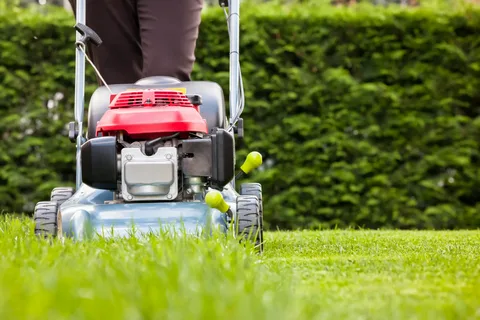The recommended interval for mowing tall grass is approximately once a week during the growing season. This time frame may vary, influenced by factors such as grass species, weather conditions, and fertilization schedules. For instance, if temperatures rise or rain patterns fluctuate, an adjustment might be necessary to maintain healthy turf.
In cooler months, particularly during fall and spring, it’s advisable to reduce the mowing frequency. Monitoring blade length is crucial; the ideal height for most grass types generally falls between two to four inches. This not only promotes healthier growth but also reduces the likelihood of weed proliferation and drought stress.
Maintaining sharp mower blades is equally significant. Dull blades tear the grass rather than cutting it cleanly, leading to brown tips and potential disease. Regularly servicing equipment ensures that each mowing session contributes positively to overall lawn health.
Determining the Right Mowing Frequency for Different Grass Types
For cool-season grasses, such as Kentucky bluegrass and fescues, mowing is best carried out every 5 to 7 days during peak growth periods in spring and fall. This frequency prevents the grass from becoming too tall, which can lead to stress and disease.
Warm-season varieties like Bermuda and Zoysia thrive in summer heat. They typically require cutting every 7 to 10 days, allowing for optimal growth and reducing competition with weeds. Observe the grass height; maintain it at about 1.5 to 2 inches for most warm-season types.
Adjusting for Conditions
Moist weather conditions may necessitate more frequent trimming, while drought or extreme heat might require extending the time between clippings. Pay attention to the grass’s growth rate and adapt accordingly.
Combining Techniques
Utilizing a mulching mower can benefit various grass types by returning nutrients to the soil, thus potentially adjusting the required mowing intervals. Regular blade maintenance is also crucial; sharp blades result in cleaner cuts, reducing stress on the grass.
For detailed guidance related to local climate conditions and grass types, visit Tommy for Wisconsin.
Understanding Seasonal Changes and Their Impact on Mowing Schedule
During the growing season, adjust cutting frequency based on the climate and grass growth rate. In spring, frequent trimming is necessary due to rapid growth; aim for every 5-7 days.
Seasonal Factors to Consider
- Temperature: Warmer weather accelerates growth; monitor local temperatures to anticipate mowing needs.
- Precipitation: Heavy rainfall promotes growth; increase mowing frequency in such conditions.
- Grass Type: Cool-season varieties thrive in spring and fall, while warm-season types flourish in summer. Tailor the schedule to match the grass’s active growth phase.
Adjusting for Seasonal Transitions
As seasons shift, modify mowing intervals accordingly. In fall, reduce frequency as growth slows. In winter, most regions require no trimming unless conditions are unusually mild.
- End of Spring: Shift to less frequent cuts as temperatures rise.
- Summer: Maintain shorter grass to retain moisture; adjust height to prevent stress.
Monitor lawn health for specific needs based on changing environmental conditions. Adaptability ensures a thriving, well-maintained yard year-round.
Identifying Signs Lawn Needs a Trim
When grass height exceeds 3 inches, intervention is necessary. Tall blades can lead to weakening at the base and increased susceptibility to pests and diseases. A visual cue is brown or yellow tips; this indicates stress on the grass.
Check for uneven growth patterns. If patches appear significantly taller than others, it’s a clear sign that trimming is overdue. Additionally, evaluate foot traffic areas. Compacted turf tends to grow thicker and shorter, requiring more frequent cutting to maintain uniformity.
Presence of seed heads is another indication; they signal that the grass is about to flower, which means it’s also time for a haircut. Monitor moisture levels, as grass often grows rapidly after rain; a quick inspection will reveal whether a cut is needed.
For those seeking tools to assist in maintaining grass health, visit All tools for you for a curated selection of equipment.
Utilizing Lawn Care Equipment for Optimal Results
Investing in high-quality lawn care machinery significantly impacts the health and aesthetics of grass. Consider a reliable rotary mower or a reel mower for a clean cut that promotes growth. For larger areas, a riding mower can save time while ensuring an even trim.
Mower Maintenance and Adjustments
Regular maintenance is key. Sharpen mower blades every 4-6 weeks during the growing season to ensure precise cuts. Adjust the cutting height according to the grass type and seasonal needs; set higher in warmer months to promote deeper roots.
Specialized Tools for Lawn Care
In addition to mowers, utilize aerators to enhance soil health by improving air and nutrient flow. Using dethatchers can remove excess organic matter, allowing grass to thrive. For edging, invest in quality string trimmers or edgers to create clean lines that define your yard.
For more equipment options and guidance, visit Garden Machinery Hub.
